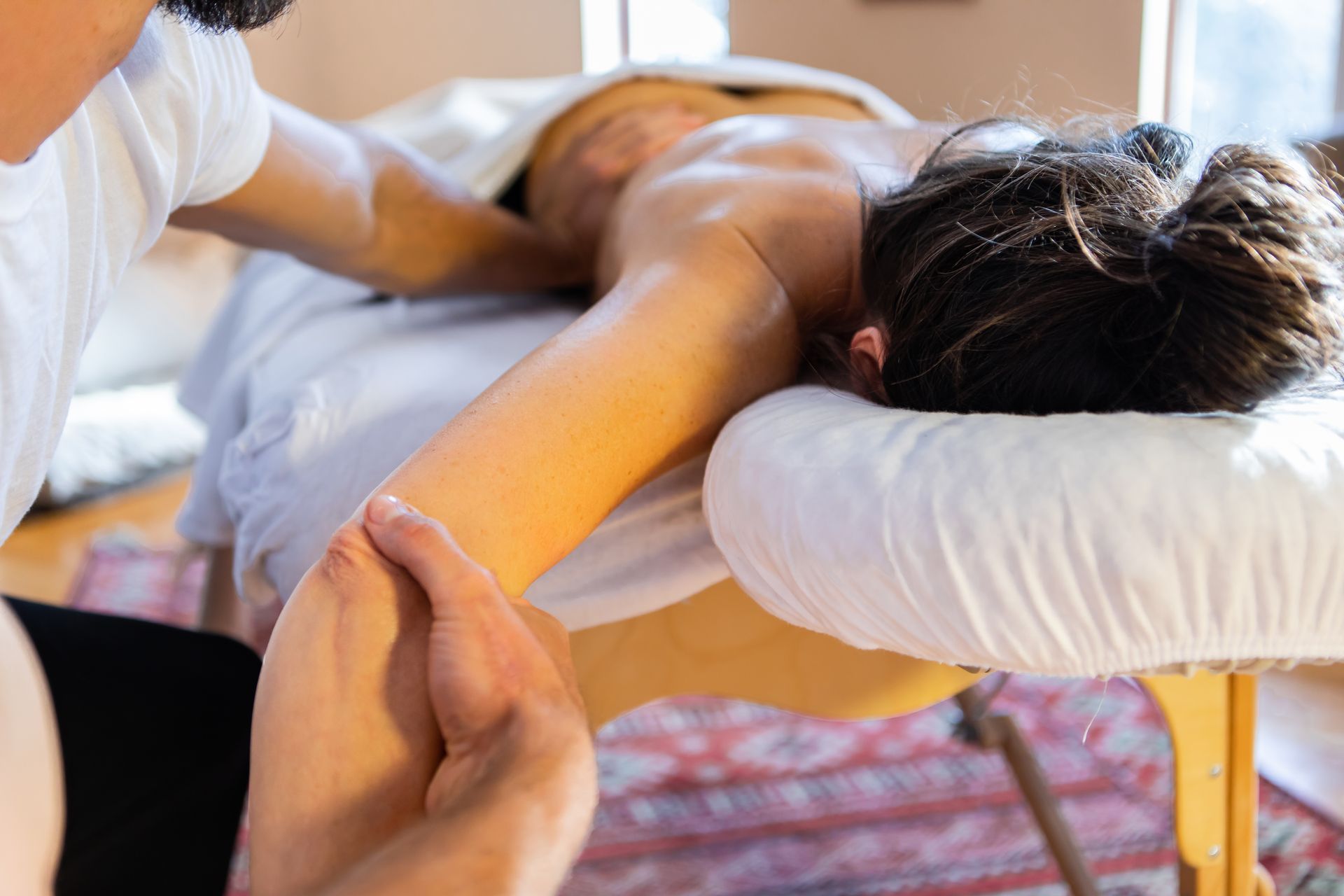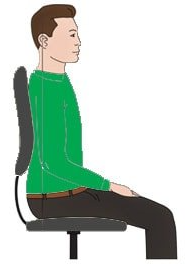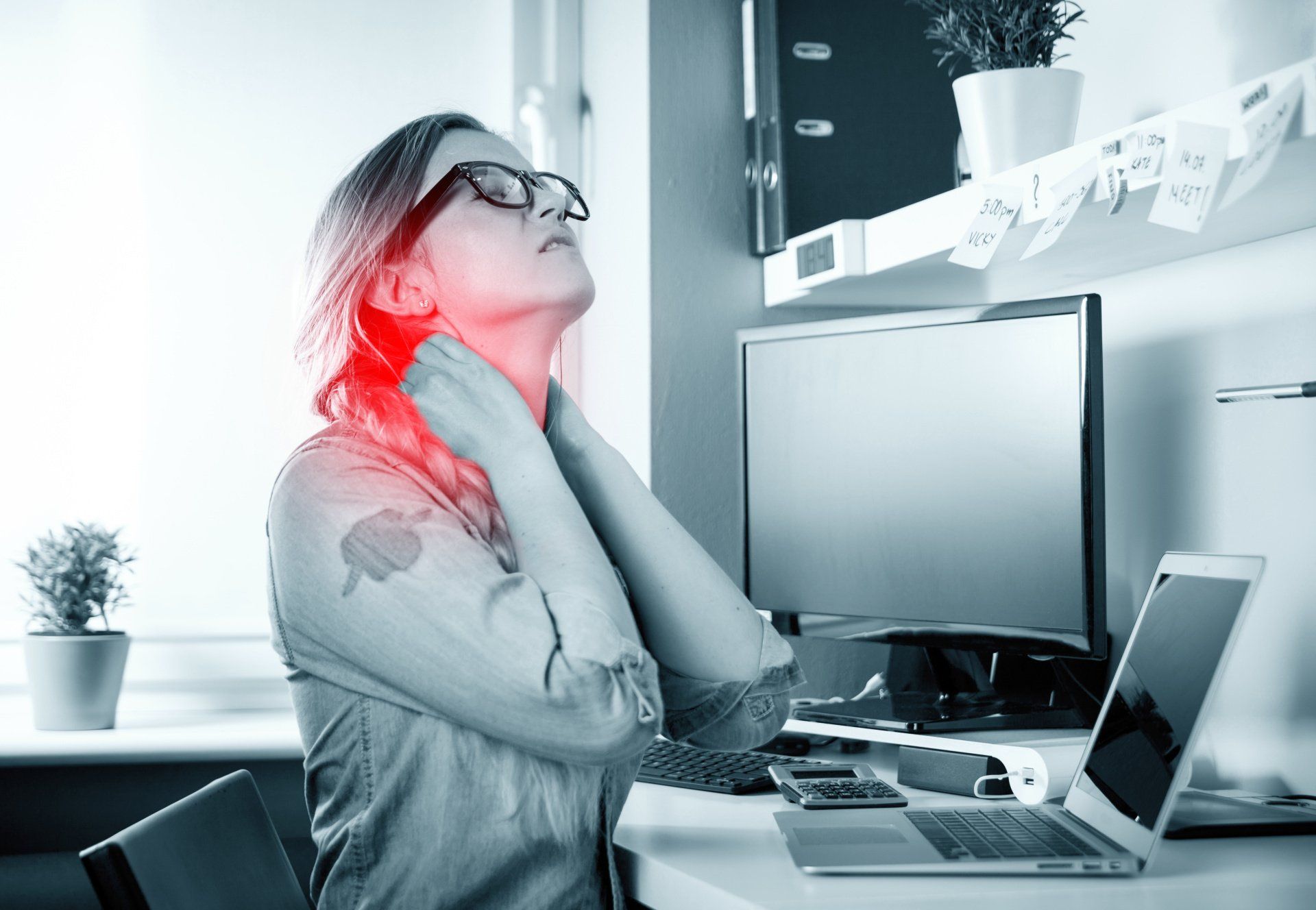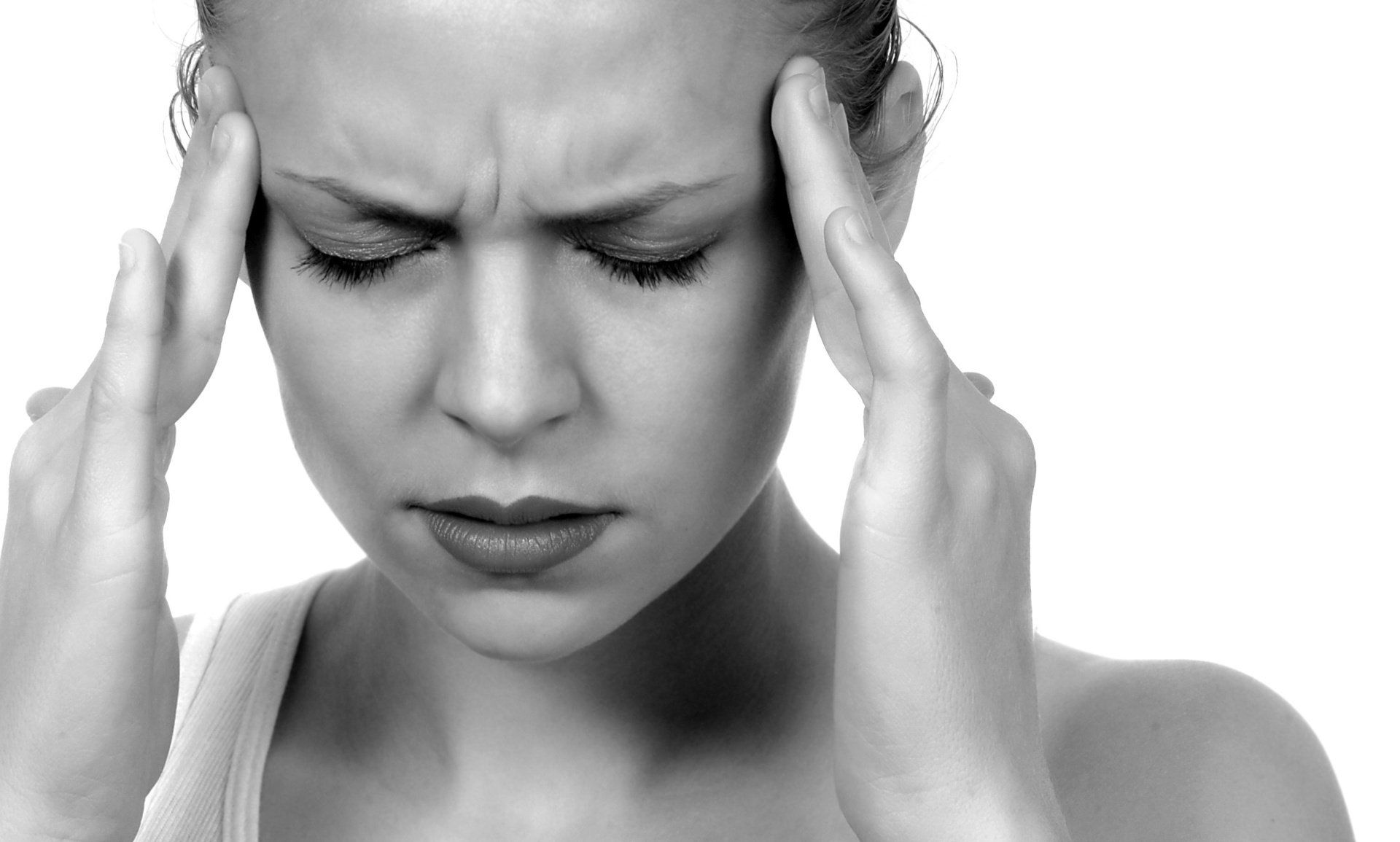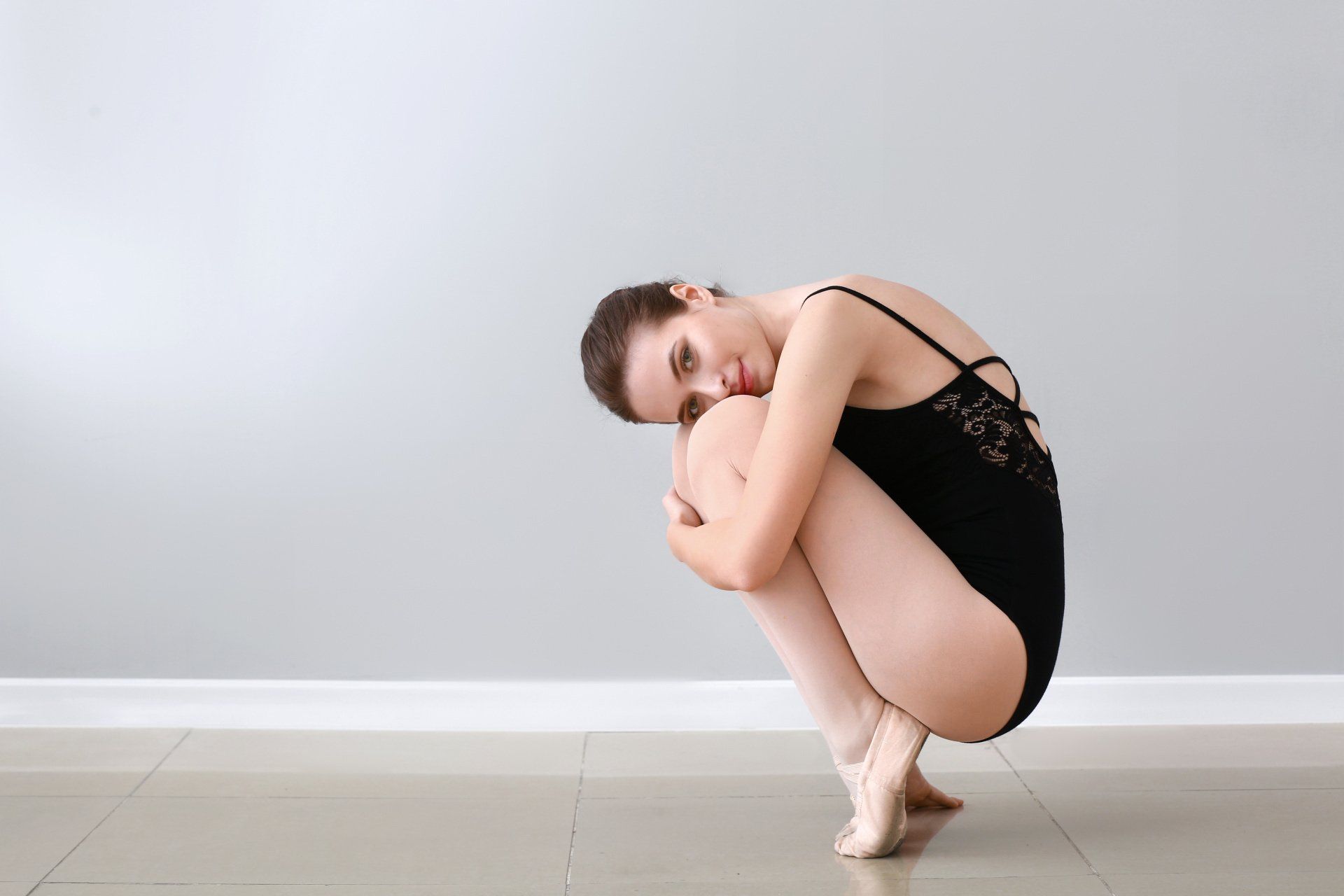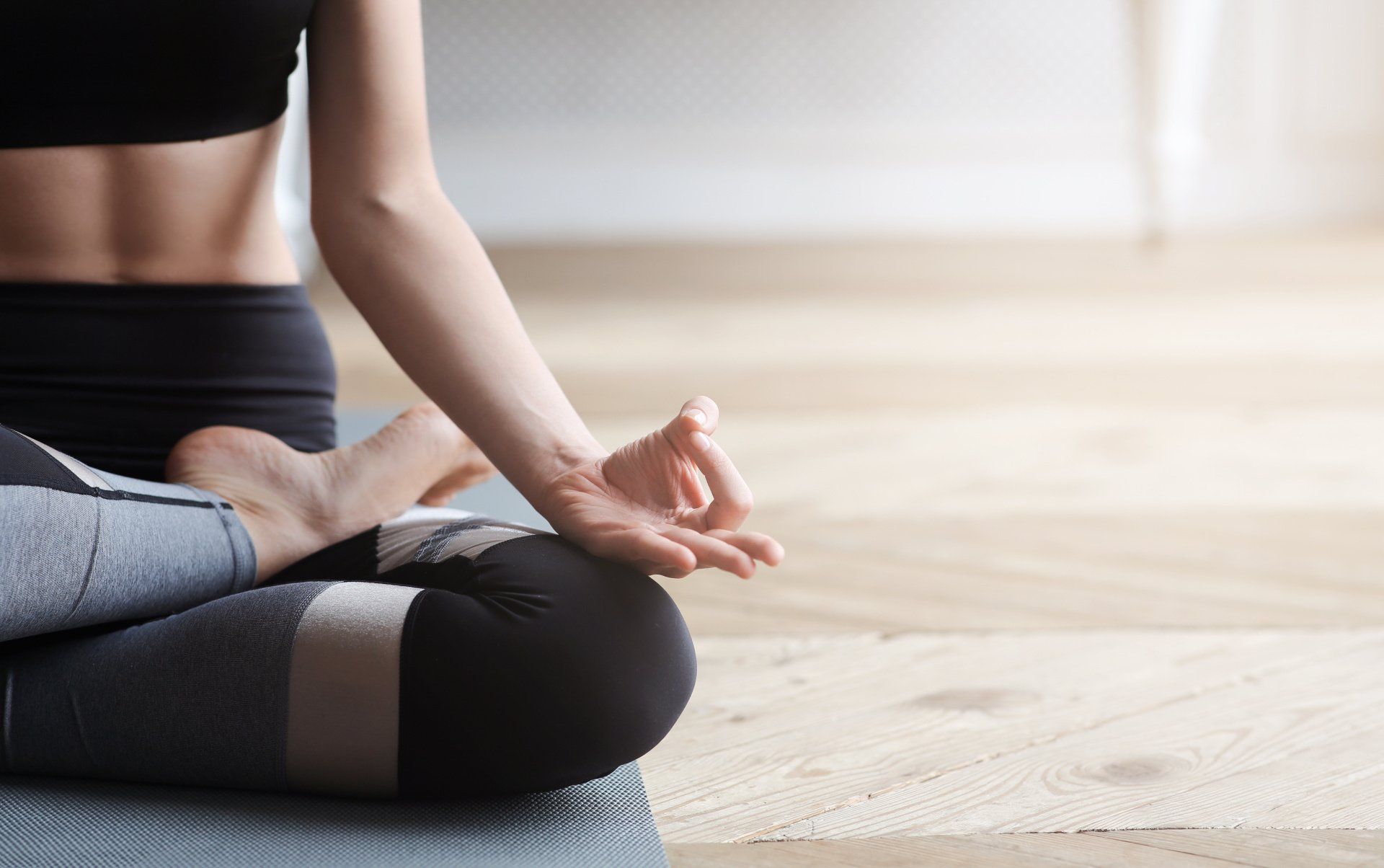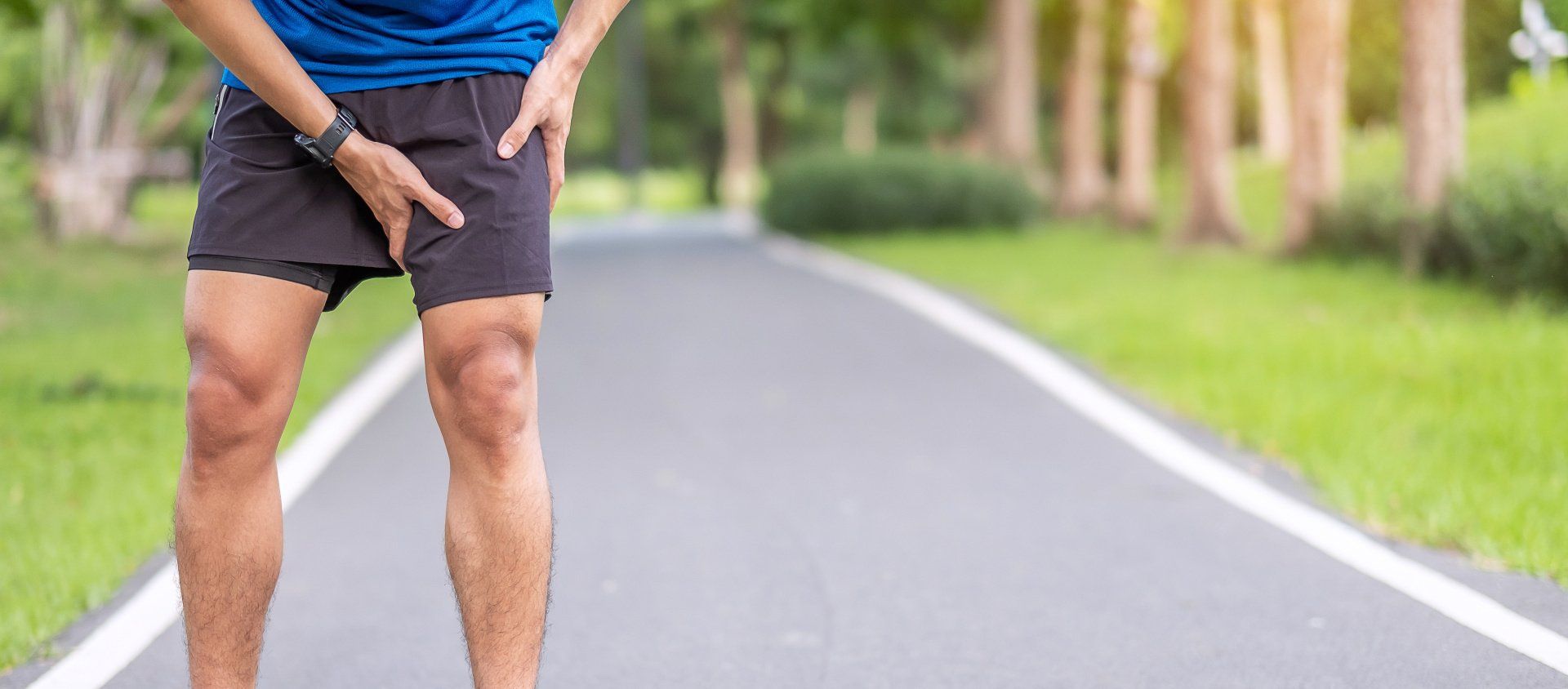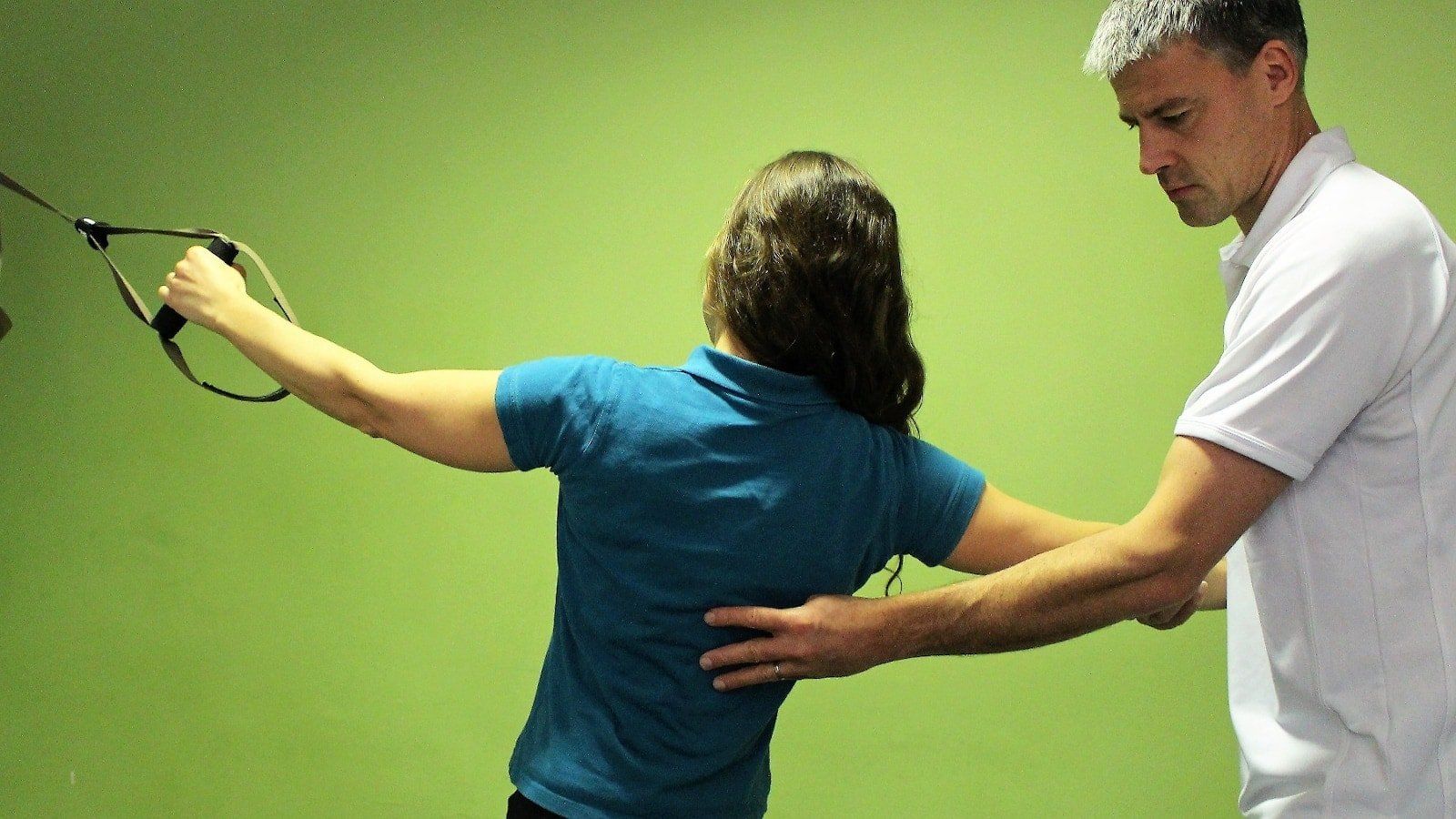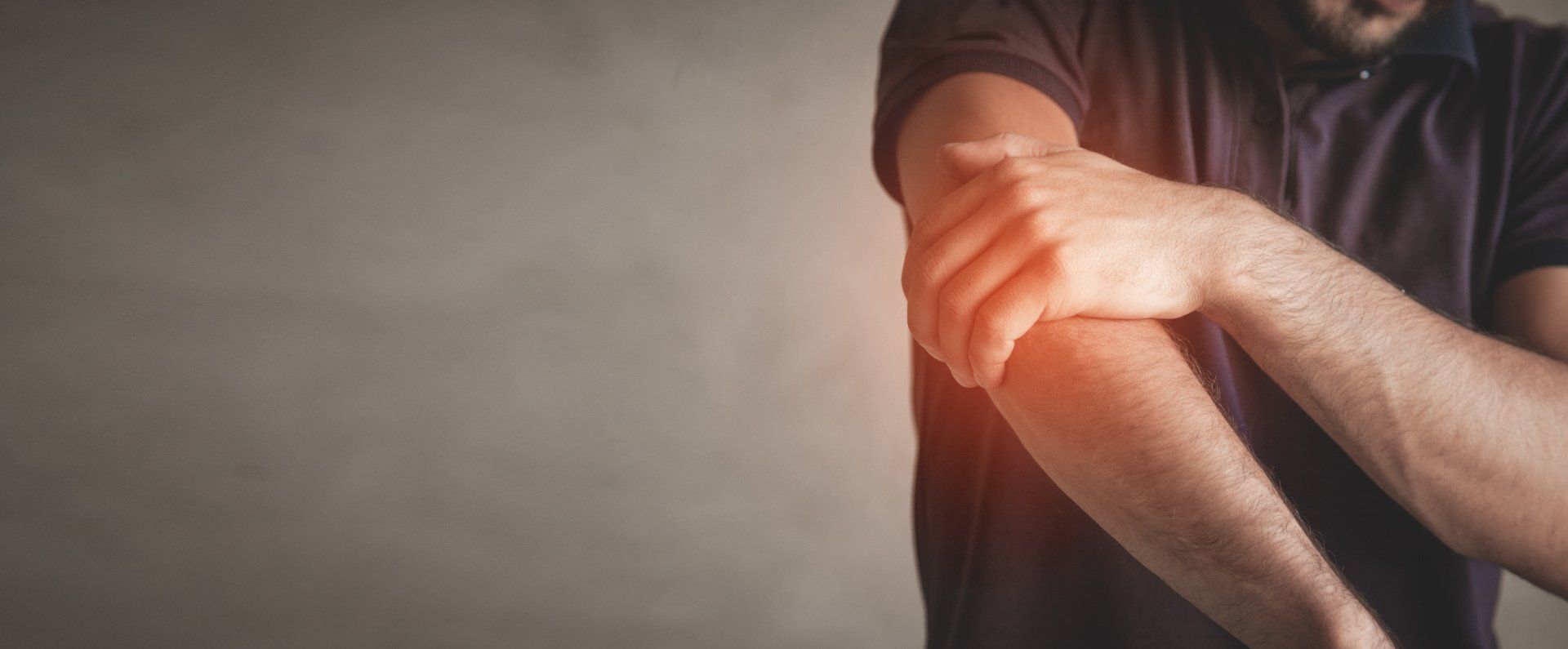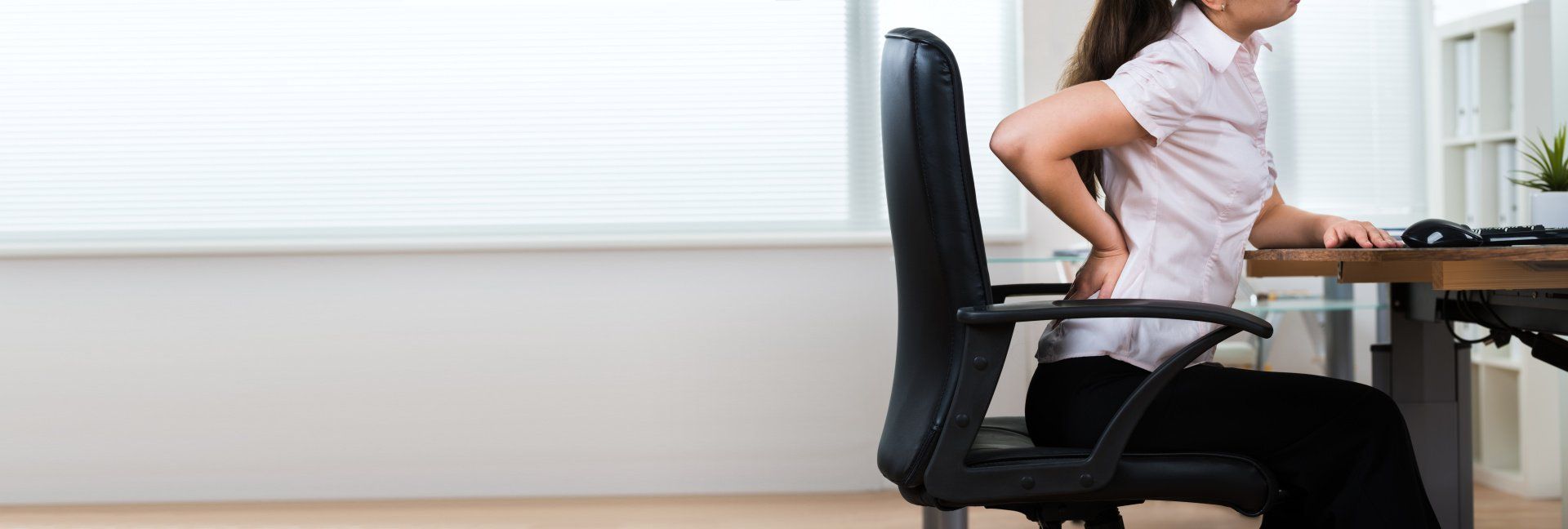How to sit properly when you’re working from home
Most of us are now working from home. Or, perhaps, playing football in the garden with your kids.
So how can you make your home a comfortable place in which to work? Here I will try to give you some simple advice and highlight the reasons most people get sore and stiff from sitting at a desk.
I will highlight the main body tissues involved and why they get sore; give some advice for good posture and behaviour; some legislation you should be aware of and dispel some myths.
The first thing to remember is that most people, when in their office, do not sit with the posture advised by all the ergonomic specialists (right).
The best thing to do is to try to recreate the posture you normally adopt at work. Unless, of course this already gives you back pain – in which case you should be giving me a call or dropping me a message to see why this is!!
Don’t waste your money a on paid-for self-assessment software kit. You can download one for free from the Health and Safety Executive (“HSE”) web site: https://www.hse.gov.uk/pubns/ck1.pdf
You’ll notice it doesn’t concentrate much on posture, but much more on the functionality of the equipment and your ability to move about or change posture. This is because most of the latest research shows little link between “ideal” posture and pain prevention or relief. It is more important to be aware of where your strains are so you can adopt a more comfortable posture, and to move more often.
Legislation
In a nut shell you have the same rights and protections when you are working from home as you have if you are working in your office. Your employer is obliged to help and support with whatever is reasonably practical.
The HSE has a brief guide for employers but employees would benefit from reading it also:
Strains
Strains caused by sitting can be generally be grouped into 2 categories. They are generally very low intensity and cumulate without you realising until they have reached a level of pain.
- Stretch. When we relax, if we are not supported, our joints will reach the end of their natural range. Further movement is limited by ligaments. Think of them as very strong and stiff elastic bands. If an elastic band is held on full stretch for long enough it will lose elasticity and eventually snap. Similarly will ligaments, especially those in the lower or mid back when we sit slouched. Try to support your spine with cushions and don’t allow it to rest on itself.
- Tension. This occurs mostly in muscles and is caused by prolonged static holds. If you hold your arm out horizontally whilst holding a tin of beans you will eventually tire your shoulder and put your arm down. It may take anything from 5 – 20 mins depending how strong you are. If you hold the same straight arm without beans you will last longer. It takes longer for the muscles to tire. The same effect happens if you hold a static posture for long enough, but with one crucial difference: the muscles tire so slowly you don’t realise they are tiring. They become slowly and cumulatively damaged until they are constantly sore even when you rest. This is very common in shoulders and necks. It is important to try to sit as relaxed as you can without allowing stretch to occur.
Tips
If you have a dedicated room or area that you are going to use as a study then great. You can try to replicate your office here as much as possible.
But if you find yourself sitting on the couch or at a kitchen table then try to remember these points:
Cushions are not for aesthetics (regardless of what my wife tells me). Use them to support your lower back. If you are sitting at the kitchen table use a chair with a backrest, stick a cushion in the small of your back and sit back in the chair. By minimising the slouch you will reduce the static strain on the lower back, which is one of the key factors leading to soft tissue strain mentioned above.
Avoid sticking your chin forward. This is the most common posture error when working with a pc, especially a laptop.
Try to balance your head on top of your neck. If you are sitting back then you will to tilt your neck so as to give yourself a double chin.
If you are on the couch use as many cushions as you need to support your lower back. A cushion (or teddy) behind your neck will help to avoid you sticking your chin forward. Not too dissimilar to one of the most advanced ergonomic solutions on the market (below left):
If you are using a laptop at the dining room table then a separate keyboard and mouse are advisable. Prop your laptop on a box or a couple of large books so that it is higher. This will make it easier to not stick your chin forwards and be able to sit back in the chair.
Often the kitchen table is higher than you will be used to. This may cause you to shrug your shoulders. The single most important reason for shoulder and neck pain is tension. Whether caused by stress, or posture, or both. You can sit on a cushion to raise yourself up and use a footrest, or another book. Or a simpler solution, which I quite like and is not found in most ergonomic manuals, is to prop your keyboard or laptop at an angle at the edge of your table. Use a cook bookstand or something that resembles a lectern. You can buy a laptop stand for less than £20. This way you can sit back in the chair and relax your shoulders. You need to maintain the straight angles of your wrists by flexing your elbows more. As long as your wrists are straight you can flex your elbows as much or little as you like. On the couch you can simply use another cushion on your lap to angle your laptop accordingly.
Lastly and probably most importantly, take time away from the screen. This will help to limit the build-up of cumulative strain. Each time you have a break you are recovering from the strain. You will also reset your posture to either a different one with different strains or to the same one “pre- slouch.” The more often the better. It is generally advised to have a break every 20 mins, even if it to just stand up and walk around the room.
Every time you take a phone call you should get up and walk around. Drink plenty. It will keep you hydrated, which aids concentration, and encourages you to get up. It doesn’t need to be water. Any fluid is fine (wine is not really what I am talking about!). Although limit coffee to 3 cups per day.
Stretching is also important and helps to break up the accumulation of strain. There are some good stretches here that can be done sitting or standing: https://www.healthline.com/health/deskercise.
Be sure not to push too hard into the stretch. Treat it more like a loosening off movement rather than a stretch. Having said that it is better to just get up and move around loosely. So don’t feel guilty about spending some time playing football with your kids when you should be working!
I hope this helps to make your working from home a little more comfortable. If you are struggling I am available for one to one consultations to help you find more comfortable solutions.
I’ll be sending out some more tips in due course. If you have anything you’d like me to write about just drop me an email: info@harmonicosteopathy.com
